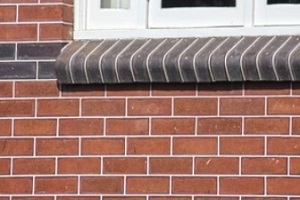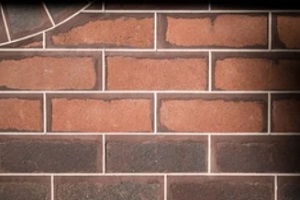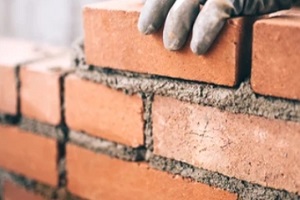 Brick is one of the most popular construction materials. Its timeless appeal and simple installation make it a popular choice throughout the world. Even the most well-lain brick will need repairs at some point, due to weather and environmental-related wear and tear. If your building needs brick repairs, you may have come across the terms “repointing” or “tuckpointing.” What is the difference between these two services, and which one is right for you? Read on to learn how you can make an informed choice for your building.
Brick is one of the most popular construction materials. Its timeless appeal and simple installation make it a popular choice throughout the world. Even the most well-lain brick will need repairs at some point, due to weather and environmental-related wear and tear. If your building needs brick repairs, you may have come across the terms “repointing” or “tuckpointing.” What is the difference between these two services, and which one is right for you? Read on to learn how you can make an informed choice for your building.
How Repointing And Tuckpointing Differ: Application
Tuckpointing and repointing are almost the same processes. In fact, they accomplish the same thing—removing old, worn, or damaged brick mortar before replacing it with new mortar. This is an integral maintenance task that will preserve the structural integrity of your home or building’s brickwork. Brick repointing and tuckpointing are two maintenance techniques that can accomplish this goal. The only difference between the two is their approach.
Repointing is the process of removing old mortar, preparing the area in between the bricks for new material, and installing new mortar that corrects the brick’s distribution of the home’s weight. Without proper repointing, bricks will bear an uneven load, and your home could begin to sag or bulge.
Tuckpointing also removes old mortar and installs new mortar, but with one important difference—a tuckpointing job adds a different color mortar that creates an attractive highlight over the newly installed material. Although the mortar’s color has no bearing on its functionality, it creates crisp, sharp lines that enhance your building exterior’s appeal. This desirable visual is highly sought after, but because it requires more materials, it comes at a greater expense.
Have a Professional Complete Your Brick Repointing or Tuckpointing Project
Does One Service Cost More Than The Other?
 Tuckpointing is the more expensive service of the two. While many factors can influence mortar repair costs—such as whether or not a contractor will need to create scaffolding to reach the top of your building—tuckpointing tends to cost more because it uses not one but two types of mortar. The first batch will be color-matched to your building so that it blends in with the brick.
Tuckpointing is the more expensive service of the two. While many factors can influence mortar repair costs—such as whether or not a contractor will need to create scaffolding to reach the top of your building—tuckpointing tends to cost more because it uses not one but two types of mortar. The first batch will be color-matched to your building so that it blends in with the brick.
The second mortar mixture uses a crisp color (often bright white) to give the mortar lines a highlighted look. Tuckpointing can be worth the additional cost because it gives your building a clean and sophisticated appearance. Consider this when determining which mortar service is right for you. For certain tuckpointing jobs, it is possible to select the color of your fillet or the bright line of mortar. This is preferable for building exteriors where white mortar lines are not the most attractive choice.
Why Repointing/Tuckpointing Are Important Maintenance Tasks
Repointing and tuckpointing are about more than just building aesthetics. Failure to properly maintain your brick and mortar can lead to catastrophic failures like collapsed or bulging walls. The mortar is responsible for even weight distribution. If mortar begins to crack or flake, it can no longer do its job. That can cause the building’s weight to buckle.
Mortar protects against moisture intrusion, and if you do not replace your mortar when necessary, your interior walls could develop water damage or mold. It can be difficult to notice mold before it’s already done major damage. Water damage can impact your building’s interior, too, facing you with significant repair costs or even total replacement or reconstruction.
For homeowners, this could mean relocating to another location during repairs. Likewise, businesses may have to put their services on hold until the repairs are complete. You can avoid these inconveniences with proactive brick maintenance.
Can You DIY This Project?
 Many types of masonry repairs can be done with just a bit of knowledge and skilled hands, but tuckpointing or repointing is better left to the experts. Because these repairs impact the actual structural integrity of your building, failure to properly install the mortar can lead to long-term issues and even safety hazards for residents or visitors. What you can do on your own is evaluate your brickwork on a regular schedule to ensure timely maintenance. When it comes to the actual installation and repair, trust the professionals instead.
Many types of masonry repairs can be done with just a bit of knowledge and skilled hands, but tuckpointing or repointing is better left to the experts. Because these repairs impact the actual structural integrity of your building, failure to properly install the mortar can lead to long-term issues and even safety hazards for residents or visitors. What you can do on your own is evaluate your brickwork on a regular schedule to ensure timely maintenance. When it comes to the actual installation and repair, trust the professionals instead.
Trust The Experts To Help You Achieve Your Structural And Aesthetic Goals
Whether you’re unsure if your mortar needs replacement or you’ve already identified mortar damage, the experts can resolve it for you. The professionals at Waterproof Caulking & Restoration would be happy to help you understand the current state of your brickwork and devise a repair plan. Reach out to schedule an appointment to get started.
